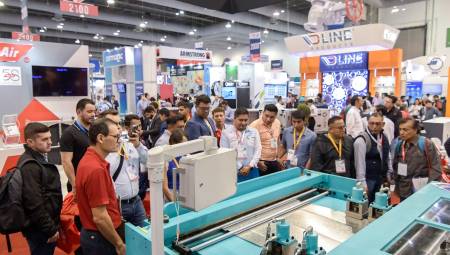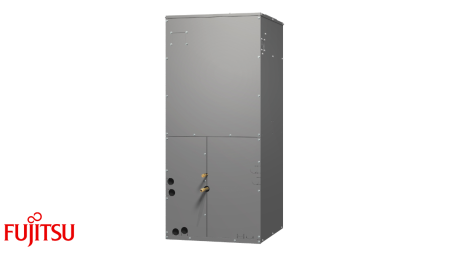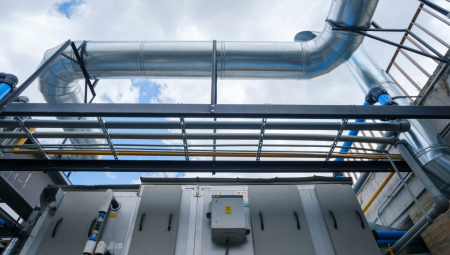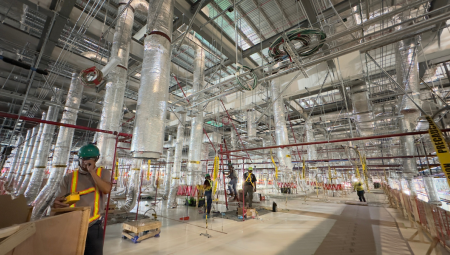 This is a case study conducted at the Hayden Library of the Massachusetts Institute of Technology (MIT) where the installation of a new technology allowed to obtain a higher Delta T. by Belimo
This is a case study conducted at the Hayden Library of the Massachusetts Institute of Technology (MIT) where the installation of a new technology allowed to obtain a higher Delta T. by Belimo
Low Delta T Syndrome is a common and costly problem in many large facilities, especially on campuses with scattered buildings and central ice water plants. This has always been, and still is, the case at MIT. However, today the problem is not as severe as it used to be. Engineers working in the University's service planning and sustainability area believe the situation will continue to improve. This is due to Belimo's new valve technology that was applied at MIT's Charles Hayden Library as an experimental test of the new Energy Valve™ product. The results are very promising for any building complex that must deal with Low Delta T Syndrome. This experience was born of a fortuitous coincidence: in 2010, Walt Henry, director of the Systems Engineering Group in mit's Department of Services, mentions to Marc Thuillard, Belimo's head of research, that the university would be interested in partnering with Belimo to test a product in development, particularly if it was a control technology that could solve any of the energy problems of the campus. "Marc asked me if I could exemplify any of those problems and I mentioned our difficulty in maintaining an acceptable difference between the temperatures, supply and return of the plant's ice water," Henry said. "I thought some modification to Belimo's existing valves could help us solve that problem." It seems that he was in luck since the company had been working for some time on the development of a valve with capabilities to combat the low Delta T, which is now known as Energy Valve. Belimo set out to design a "smart" valve that combined the function of an independent pressure control valve that also included a flow sensor and return and supply water temperature sensors. This valve would also have logical and communication capabilities that could use these detected values to optimize the performance of the coil. This technology would be used to optimize the heat transfer performance of the individual coils by continuously monitoring the Delta T and comparing this value with the default of the Delta T. When these values were not equal or not close enough, the valve would adjust automatically. In addition, the data collected by the valve would be reported to the Building Automation System (BAS) and would be available for future adjustments or diagnostics. Coincidentally, MIT offered the perfect opportunity to test this developing technology: the Charles Hayden Library. Why the Hayden Library?
MIT engineers were aware that the problems caused by a low Delta T syndrome represented a significant cost of energy on campus. This problem alone cost the campus $1.5 million annually when the combined consumption of chillers, pumps and fans from cooling towers around the site was taken into account. The problem was particularly urgent at the Charles Hayden Library where data showed that the coils throughout the building had a very low average Delta T reading of only 6ºF, which implied a pumping of water through the building higher than necessary and even greater than convenient.
According to Henry, the library's problems were caused by a combination of several factors. First, many of the building's coils were designed for a lower Delta T than is currently used, and in addition, the building originally had its own ice water plant that operated under constant flow conditions. Second, many, if not all, of the coils had lost much of their heat transfer capacity due to obstructions. Other factors included oversized control valves, inadequate hydronic balancing, and air handling units (UMAs) whose logical control depended on information supplied by air sensors. According to Peter Cooper, director of Service Planning and Sustainable Engineering at MIT, the Hayden Library had homogeneous demand patterns (there are no laboratories or other spaces with special demands) to take into consideration in the control scheme, making this a very convenient test site. In addition, the library is located away from the ice water plant, so an increase in delta T along with a reduction in flow to and from the building would provide greater potential for energy savings. How it works
Energy Valve technology was adapted to five air handling units in the library. By operating under this control technology, the valves eliminate the excess pumping through the coils that occurs when they are overloaded with energy, that is, when their heat transfer capacity has been exhausted and any additional flow will produce a waste of energy in the pumping. The Energy Valve provides precise automatic flow control through its characterizing disc, which provides a wide adaptability of the ball). The equal percentage feature of the disc reduces actuator oscillation and stabilizes system output through small incremental changes in water flow during the first 10 to 30 degrees of valve opening—where control accuracy is most critical. The precise regulation of the flow rate of the pressure independent valve is the result of continuous monitoring and analysis of the flow rate and the Delta T. This system continuously monitors the Delta T of the coil and compares its values with the default value. Ideally these values are the same. However, if the actual Delta T deviates from the set value, the valve will automatically adjust until the value returns to its default state. Once the appropriate Delta T has been restored, the logical control of the valve is resumed in its usual mode of operation (pressure independent). Thanks to its integrated web server, all detected or calculated values are monitored and adjusted, including, among others, water flow values, return and supply water temperature, power and power. All this information is sent to the BAS via the BACnet MS/TP or the BACnet IP where it can be used for further adjustments or analysis. Flows are reduced by half
Prior to the remodeling project, delta T's total average for coils at the Hayden Library was 6.15°F, based on measurements taken during the period from August 9 to October 9, 2010. After this, new measurements were made in the building during the same calendar period (August 9 to October 9) but in 2011. The Delta T average had risen from 6.15°F to 12.14°F, reducing the building's water ice flow by 49%. This percentage has been normalized according to the climate, that is, it was adjusted for variations in the outside temperature that occurred during the measured period. What does this flow reduction mean in terms of energy savings for a facility like MIT? According to Peter Cooper, the savings obtained by reducing the flow rate and increasing the Delta T is considerable. "We've done studies at MIT that indicate that if we could fix all the problems under Delta T, the annual savings would reach $1.5 million," Cooper says. You can save that figure several times by avoiding the cost of additional chillers," he added, noting that better control allows you to get more out of the existing equipment. The experimental test at the Hayden library convinced Cooper of something else: the value of data. "One of the things that impressed us was having so much intelligence there, in the valve actuator," Cooper said. "You can characterize the performance of a coil with just a couple of data and with that information you can observe the degradation of the coils and consequently refocus maintenance strategies. That's very useful when you have a campus with limited maintenance resources." MIT anticipated that it will add more Belimo Energy Valves in other areas of the campus in order to continue its fight against the low Delta T.













